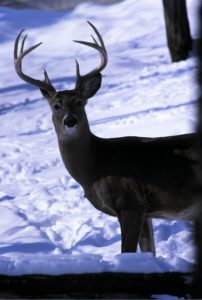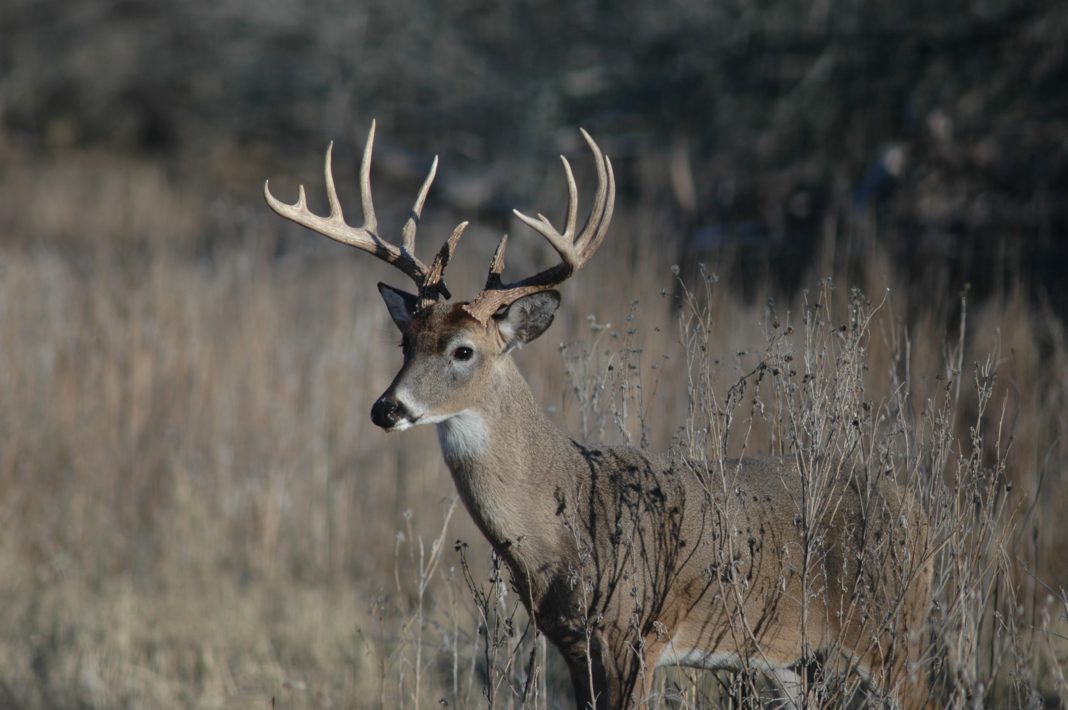Making a killing shot on a whitetail deer is easy… if its at close range, perfectly still, standing broadside, with its head behind a tree. As experienced hunters know this is rarely the case and if you practice taking this shot with a gun or bow, you aren’t preparing for the real world of whitetail hunting.
Alertness Counts
 Rick Wilson, an archer from Maryland, had a doe walk past his stand, the animal browsing on acorns in freshly fallen leaves. As Wilson drew his bow, a branch contacted his arm so that when the arrow released, the leaves made a wooshing sound, like a squirrel jumping from branch to branch. Wilson saw the arrow strike the deer, yet it kept on feeding, took several steps and fell over dead. He was so influenced by this incident, he routinely tied leaves to his bow to cover the sound of release.
Rick Wilson, an archer from Maryland, had a doe walk past his stand, the animal browsing on acorns in freshly fallen leaves. As Wilson drew his bow, a branch contacted his arm so that when the arrow released, the leaves made a wooshing sound, like a squirrel jumping from branch to branch. Wilson saw the arrow strike the deer, yet it kept on feeding, took several steps and fell over dead. He was so influenced by this incident, he routinely tied leaves to his bow to cover the sound of release.
A deer that has been alerted by your sight or sound is much more difficult to kill with an arrow, than one in a relaxed mode. Only the fastest crossbows and compounds can impact the deer as it stands at 20 yards. The animal is almost certain to crouch as it flees, changing the aiming point dramatically.
Best Shot Angles
Mark Kayesr is one of the most respected outdoor writers of the day and his suggestions on the best angles to shoot a deer are spot on, if you will excuse the pun. The artwork provided is excellent in helping a hunter to visualize where to aim with a rifle or bow. Here’s Kayser’s advice:
“X” marks the spot on most whitetail targets with a position firmly one-third up the body and tight behind the shoulder. And that’s where to shoot a deer. It works, too, until a whitetail deer shows up in your shooting lane at an angle you hadn’t even anticipated.
The Broadside Shot
Broadside shot is the ideal angle and it gives the bowhunter a straight shot to exposed vitals and a large target for a lethal hit.
The Archery Trade Association’s Bowhunting 360 website offers these two steps for the broadside shot:
www.grandviewmidia/big-game-hunting



















![The Best Deer Camp Chili [VIDEO] Deer Chili Ingredients, Tomatoes, Chili Spices](/wp-content/uploads/2015/10/Deer-Chili-Deer-Camp-Recipe-218x150.jpg)
![How to Call Elk Early in the Season [VIDEO]](/wp-content/uploads/2016/08/byers003-218x150.jpg)




![Idiots Disturb Hunter: How Would You Have Handled It? [VIDEO]](/wp-content/uploads/2015/10/DSC00110-e1474487693878-100x70.jpg)
![Albino Buck Shocked to Shed His Antlers [VIDEO]](/wp-content/uploads/2015/10/AlbinoDeer-100x70.jpg)